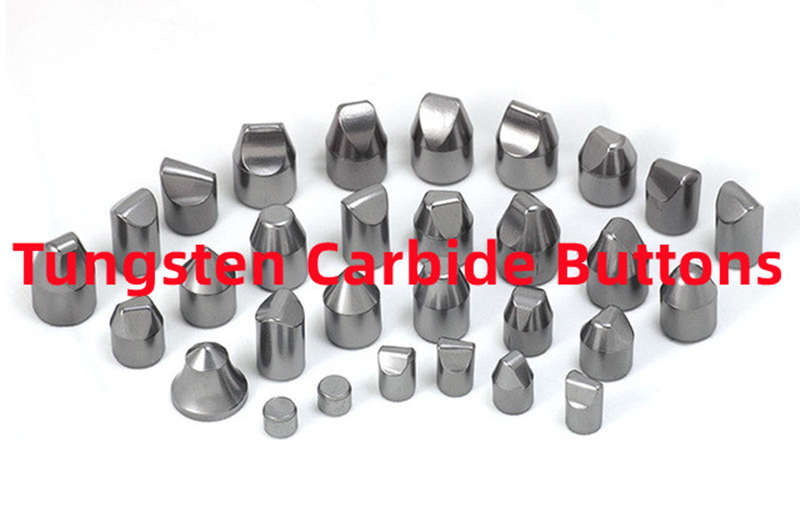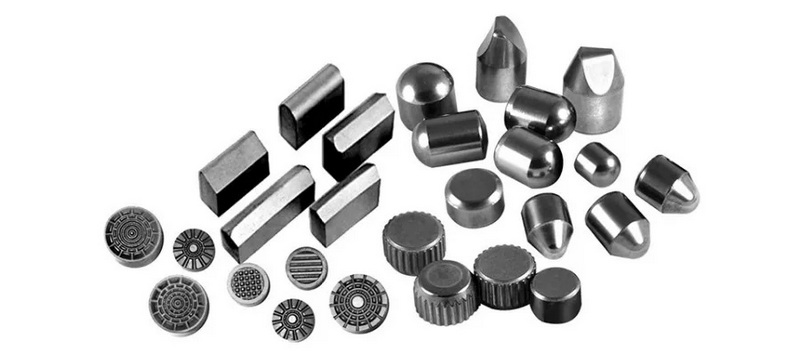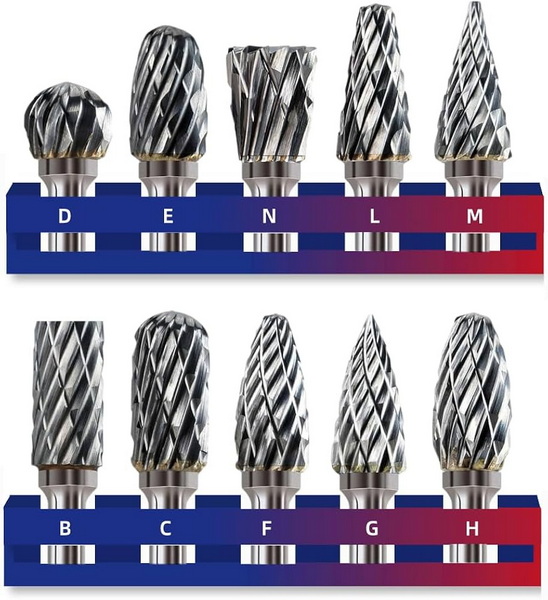Content Menu
● Introduction to Tungsten Carbide
>> Composition and Physical Properties
● Comparison with Other Materials
>> Tungsten Carbide vs. Steel
>> Tungsten Carbide vs. Tungsten
>> Tungsten Carbide vs. Titanium Carbide
● Applications of Tungsten Carbide
>> Emerging Trends and Innovations
>> Industry Outlook
● Challenges and Opportunities
● Conclusion
● Frequently Asked Questions
>> 1. What is the primary difference between tungsten and tungsten carbide?
>> 2. Why is tungsten carbide more expensive than tungsten?
>> 3. How does tungsten carbide compare to steel in terms of hardness?
>> 4. What are the primary applications of tungsten carbide?
>> 5. Is tungsten carbide recyclable?
● Citations:
As a carbide products company specializing in the research, development, production, and sales of carbide products, we often encounter questions about the differences between tungsten carbide and other materials. In this article, we will delve into the unique properties and applications of tungsten carbide compared to other materials, highlighting its advantages and uses in various industries.

Introduction to Tungsten Carbide
Tungsten carbide is a chemical compound composed of tungsten and carbon atoms, with the chemical formula WC. It is renowned for its exceptional hardness, ranking between 9 and 9.5 on the Mohs hardness scale, making it one of the hardest materials known, second only to diamond. This property makes tungsten carbide ideal for applications requiring high wear resistance and durability.
Composition and Physical Properties
Tungsten carbide has a high melting point of approximately 2,870°C (5,198°F), which is slightly lower than pure tungsten's melting point of 3,422°C (6,192°F). However, tungsten carbide's density is about 15.63 g/cm³, which is slightly less than tungsten's density of 19.3 g/cm³. Despite this, tungsten carbide's hardness and wear resistance make it superior for industrial applications.
Comparison with Other Materials
Tungsten Carbide vs. Steel
Steel is an alloy primarily composed of iron and carbon, whereas tungsten carbide is a compound of tungsten and carbon. Tungsten carbide is significantly harder than steel, with a hardness range of 85-95 HRA compared to steel's 62-65 HRC. This hardness difference allows tungsten carbide tools to maintain a sharper cutting edge for longer periods and machine harder materials more effectively.
However, steel generally exhibits greater toughness than tungsten carbide, making it more resistant to chipping and breakage under impact. Tungsten carbide's brittleness can be mitigated by combining it with binders like cobalt or nickel, enhancing its durability in demanding environments.
Tungsten Carbide vs. Tungsten
Tungsten is a pure metallic element known for its high melting point and density. While tungsten is hard, ranking between 7.5 and 8 on the Mohs hardness scale, it is softer than tungsten carbide. Tungsten is often used in applications requiring high thermal conductivity and electrical conductivity, such as heating elements and electrical contacts.
Tungsten carbide, on the other hand, is used in applications where extreme hardness and wear resistance are necessary, such as cutting tools and wear-resistant parts. The addition of carbon to tungsten significantly enhances its hardness, making tungsten carbide a preferred choice for high-wear applications.
Tungsten Carbide vs. Titanium Carbide
Titanium carbide has a higher hardness than tungsten carbide, with a Mohs hardness of 9-9.5 compared to tungsten carbide's 9-9.5, but titanium carbide's hardness is more consistently reported at the higher end of this range. However, tungsten carbide is more widely used in cutting tools due to its higher toughness, which allows it to withstand mechanical stress better than titanium carbide.
The production cost of tungsten carbide is generally lower than that of titanium carbide, making it more cost-effective for many industrial applications.

Applications of Tungsten Carbide
Tungsten carbide is widely used in various industries due to its exceptional hardness and wear resistance. Some of its key applications include:
- Cutting Tools: Tungsten carbide is used in cutting tool inserts for machining metals due to its ability to maintain a sharp cutting edge at high temperatures.
- Mining and Construction: It is used in wear parts for mining and construction equipment to enhance durability and reduce maintenance costs.
- Oil and Gas: Tungsten carbide is used in drilling bits and other wear-resistant components in the oil and gas industry.
- Aerospace: Its high thermal resistance makes it suitable for components in aerospace applications.
Emerging Trends and Innovations
In recent years, there has been a growing interest in developing new applications for tungsten carbide, particularly in the aerospace and defense sectors. The use of advanced manufacturing techniques, such as 3D printing, is also becoming more prevalent in the production of tungsten carbide components. This allows for the creation of complex geometries that cannot be achieved with traditional manufacturing methods, further expanding the potential applications of tungsten carbide.
Moreover, the focus on sustainability and recycling is driving innovations in tungsten carbide recycling. As a carbide products company, we recognize the importance of sustainable practices and are actively involved in developing processes to recycle tungsten carbide scrap, reducing waste and conserving resources.
Industry Outlook
Looking ahead to 2025, the demand for tungsten carbide is expected to increase due to its critical role in various industries. The ongoing development of new technologies and applications will continue to drive growth in the tungsten carbide market. Additionally, advancements in recycling technologies will play a crucial role in ensuring the long-term sustainability of tungsten carbide production.
Challenges and Opportunities
Despite its many advantages, tungsten carbide faces challenges related to its brittleness and the high cost of production. However, these challenges also present opportunities for innovation. Researchers are continually working on improving the toughness of tungsten carbide by developing new binders and manufacturing techniques. Furthermore, the increasing focus on sustainability is driving efforts to reduce production costs and improve recycling efficiency.
As a carbide products company, we are committed to addressing these challenges through ongoing research and development, ensuring that tungsten carbide remains a vital component in modern industry.
Conclusion
In conclusion, tungsten carbide stands out from other materials due to its exceptional hardness, wear resistance, and thermal stability. As a carbide products company, we recognize the importance of tungsten carbide in various industrial applications, from cutting tools to aerospace components. Its ability to withstand extreme conditions and maintain performance over time makes it a crucial material in modern industry.

Frequently Asked Questions
1. What is the primary difference between tungsten and tungsten carbide?
Tungsten is a pure metallic element with a high melting point, while tungsten carbide is a compound of tungsten and carbon, known for its exceptional hardness and wear resistance.
2. Why is tungsten carbide more expensive than tungsten?
Tungsten carbide is more expensive due to the additional processing steps required to combine tungsten with carbon, which enhances its hardness and durability.
3. How does tungsten carbide compare to steel in terms of hardness?
Tungsten carbide is significantly harder than steel, with a hardness range of 85-95 HRA compared to steel's 62-65 HRC.
4. What are the primary applications of tungsten carbide?
Tungsten carbide is primarily used in cutting tools, mining and construction equipment, oil and gas drilling, and aerospace components due to its high hardness and wear resistance.
5. Is tungsten carbide recyclable?
Yes, tungsten carbide is recyclable. Its scrap can be gathered, melted down, and reformed, making it a sustainable choice for industrial applications.
Citations:
[1] https://konecarbide.com/tungsten-vs-tungsten-carbide-differences-explained/
[2] https://cowseal.com/carbide-vs-steel/
[3] https://en.wikipedia.org/wiki/Tungsten_carbide
[4] https://ewsllp.in/why-to-choose-tungsten-carbide-over-other-metals/
[5] https://www.alamy.com/stock-photo/tungsten-carbide.html
[6] https://www.samaterials.com/content/cemented-carbide-vs-tungsten-steel.html
[7] https://www.ipsceramics.com/tungsten-carbide-metals-and-ceramics-working-as-one/
[8] https://www.linde-amt.com/resource-library/articles/tungsten-carbide
[9] https://industrialmetalservice.com/metal-university/differentiating-tungsten-carbide-vs-steel-and-other-tooling/
[10] https://create.vista.com/photos/tungsten-carbide/
[11] https://heegermaterials.com/blog/79_tungsten-carbide-vs-titanium-carbide.html
[12] https://shop.machinemfg.com/tungsten-vs-tungsten-carbide-key-differences/
[13] https://carbideprocessors.com/pages/carbide-parts/tungsten-carbide-properties.html
[14] https://www.carbide-products.com/blog/tungsten-carbide-and-hss/
[15] https://www.reddit.com/r/explainlikeimfive/comments/18ppmzu/eli5_the_difference_between_a_metal_alloy_and_a/
[16] https://www.hyperionmt.com/en/products/Wear-Parts/carbide-vs-steel/
[17] https://hanoverjewelers.com/blogs/education/tungsten-carbide-vs-ceramic-rings-whats-the-difference
[18] https://www.imetra.com/tungsten-carbide-material-properties/
[19] https://grafhartmetall.com/en/what-is-the-difference-between-ceramics-and-tungsten-carbide/
[20] https://www.zgjrdcc.com/tungsten-carbide-vs-ceramic-wear-parts/
[21] https://www.syalons.com/2024/07/08/silicon-carbide-vs-tungsten-carbide-wear-applications/
[22] https://www.stevengdesigns.com/blogs/news/tungsten-carbide-rings-vs-ceramic-rings-which-is-better
[23] https://www.gwstoolgroup.com/understanding-the-different-types-of-carbide-in-cutting-tools/
[24] https://stock.adobe.com/search?k=tungsten+carbide
[25] https://www.istockphoto.com/photos/tungsten-carbide
[26] https://www.kennametal.com/us/en/resources/blog/metal-cutting/tungsten-carbide-versus-cobalt-drill-bits.html
[27] https://www.freepik.com/free-photos-vectors/tungsten
[28] https://www.gettyimages.in/photos/tungsten-carbide
[29] https://supraindustries.com/uses-of-tungsten-carbide-burrs/
[30] https://www.shutterstock.com/search/tungsten
[31] https://stock.adobe.com/search?k=carbide
[32] https://periodictable.com/Elements/074/pictures.html
[33] https://www.istockphoto.com/photos/tungsten-carbide-drill-bits
[34] https://www.gettyimages.in/photos/tungsten
[35] https://www.shutterstock.com/search/tungsten-carbide
















